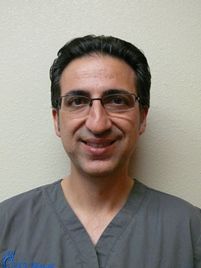Unfortunately, no. Clubfoot is a relatively common congenital deformity, occurring in about one in every thousand births. Babies born with this birth defect have one or both feet twisted inward and upward—the sole of the foot faces sideways or upward, rather than downward—and the condition doesn’t heal on its own. Without proper treatment, your child may not be able to walk properly. 
The good news is that the prognosis for most cases is positive, as clubfoot typically responds well to treatment. Most children go on to lead happy, healthy, and fully-mobile lives. Our experienced children’s podiatrist explains the various treatment options for how to fix clubfoot in your baby.
Early Detection and Treatment Are Key
Some issues with children’s feet develop later in life. You may not notice anything amiss with their feet until they start school. Like adults, children also experience sports injuries too. But, in most cases, the symptoms of clubfoot are apparent right from birth.
Your baby may not feel any pain or discomfort from clubfoot, but this doesn’t mean correcting the condition is any less urgent. Parents may be hopeful that a mild case of clubfoot will correct itself, but that’s simply not the case. Regardless of severity, treatment needs to start immediately—with early attention, clubfoot is easy to address and fix. The process begins by consulting an experienced podiatrist who can fully diagnose the issue and outline a treatment plan.
Left untreated, clubfoot limits your child’s ability to:
- Walk effectively.
- Wear normal shoes.
- Avoid additional problems, such as lifelong foot pain.
Clubfoot could also indicate more severe health conditions, such as spina bifida.
Treatment Options for How to Treat Clubfoot in Your Baby
Unlike some other baby foot problems that fix themselves over time, clubfoot requires quick intervention. Depending on the severity, the process may take several months, plus a follow-up period to prevent relapse. Fortunately, there are many clubfoot treatment methods that provide lasting results. Here are a few your doctor may recommend.
Ponseti Casting Method
The most common approach is the Ponseti casting method, a non-invasive and effective solution for treating clubfoot in babies. Also sometimes referred to as serial casting, a podiatrist gently stretches and manipulates the affected foot. This is a gradual process to place the foot in its correct position. Then, the baby’s foot will be set into a cast.
After a period of time, the cast is removed. The podiatrist may check the position with an X-ray, before once again manipulating and stretching the foot to the correct position. The affected foot is set into another cast. The podiatrist repeats this process several times over the course of a few weeks—in some cases, it may take up to four months.
Achilles Tenotomy
One possible symptom of clubfoot is an Achilles tendon that’s too short and too tight. The Achilles tendon connects the heel bone to the two calf muscles in the lower leg—the gastrocnemius and the soleus. If Ponseti casting doesn’t initially achieve the desired results, your podiatrist may suggest an Achilles tenotomy. This procedure involves a complete cut of the Achilles tendon. The goal of this procedure is to lengthen the tendon and improve foot flexibility. This also reduces tightness in the calf muscles.
An Achilles tenotomy may not be necessary in all cases, but most children with clubfoot benefit from lengthening the tendon. After your baby undergoes this simple procedure, it may be easier to manipulate the foot into its correct position for subsequent casting. The process involves a small incision but usually doesn’t require stitches. While the area is numbed during the procedure, your baby may experience some discomfort for a couple of days afterward. Most doctors suggest an infant-appropriate pain reliever during this time.
Splinting to Prevent Relapse
Even after the Ponseti casting treatment, some feet angle back into clubfoot. Splinting is an effective preventative measure against relapse by keeping the foot in its correct position.
Generally, your baby wears the splint full time for up to three months. After that, your physician may recommend that it be worn at night for approximately two years. During this time, the child may be fitted with braces or special shoes too. But once your toddler has walked normally for about a year, they’ll unlikely need any assistive devices and will be raring to go!


